
“Whenever I came here in the 1980s or 1990s, Dhyan Singh would make it a point to visit me…” my uncle said.
“Dhyan Singh, who?”
“The famous dacoit Dhyan Singh!… You don’t know about Dhyan Singh?”
“No idea…”
“He had twenty-two murders on his head and a bounty of 50,000 on him those days…”
“Really, how come he visited you?”
“Just to catch up, and he really liked your grandma’s cooking…”
“Oh, so you were friends?”
“No, not really…”
“Then?”
“We studied together till class 5…”
Many years ago (I don’t remember how many) I made a trip to Etawah with my father. We went there from a place called Gola Gokarannath in an ambassador car. It was during the monsoons and the rains had flooded most of the countryside. The road looked as if floating on water. I was scared and excited. The reason for the journey eludes me, but it took a whole day to accomplish. I remember the car (it was not our car), its grease-smeared doors, the pesky resident mosquitoes and the trouble its third gear gave my father. He could not engage that gear without grating—he couldn’t do it properly in our Fiat either. The third gear eluded my father for a long time.
When we reached Etawah, my father took me to his college where he studied till twelfth standard. It was a yellow building stained by large water blooms and streaks of moss in dark green. Then he showed me the ground where he played hockey bare-feet and cricket without the right pad and gloves. Later, we walked on the railway tracks and visited the small eatery where he and my uncles had tea with bun-omelet.
I remember Etawah for its air—an aromatic fare of wet stone, horse dung and coal smoke. My father was excited to show me around. He had lived a different life from mine and spoke of it in a tone crumbed with love. His stories recounted days of horse drawn carriages, steam locomotives, fly-buzzed, shoe-less, pustule pocked existence in the exquisite company of cholera and small-pox.
After a day spent in Etawah we went to our ancestral village, Baralokpur. It is twenty kilometres away and I remember, every meter of that journey rattling my young bones and their sockets to the extent of their legitimate location. Mind you, my father considered driving at the right side of fifty kilometres per hour ill-fitting a civilised man–that too on the highway. Even so, I endured the roll over potholes at walking speeds with excitement.
However, the village laid a different carpet. My father got occupied with elders, spoke in an alien tongue, and paid almost no attention to me. Wandering around by myself, I peered into the dark bellies of two wells (the memory of one still scares me), jumped over streams of cow dung and sneezed a bit in a haystack. For the first time in my life, I heard a peacock call. It sounded like a big cat meowing.
Ours was a big house where six families lived. The part belonging to us had a large windowless room, so just a small area next to a hefty wooden door was privy to sunlight. The rest was a mysterious cave and it smelled like one—a mix of water, grain and earth. I saw a few mice scurry to my faint shadow. My uncle told me about regular visitations of snakes to feast on the mice. I didn’t care for the snakes since I was very happy to meet my grandmother.
I remember the smoky sweet food, the beautiful moonlight and the creaky coir bed that stung me through the thin sheet of cloth. The village had no electricity and we slept in the open. I remember lying embraced to my grandma, inside a tent of mosquito net and the discomforts of night fading in that sanctuary.
Our house was one of the few that had a toilet. Its basic function was extended beyond the called upon duty, for sometimes it doubled as a conference room. A mud platform with three appropriately spaced oval orifices was the toilet. Each had two bricks laid on either side to sit upon. The orifice opened over large iron bowls placed below the platform. So, one’s contribution landed into those bowls. Every morning, after the ablutions, women of lower caste, called Bhangans would collect the bowls and dispense their effects into the fields. It was a dreadful job. However, according to my uncle, these women though not treated equal, were not looked down upon either. Quite often meals and clothes were shared with them. I wonder what stories they told their children.

I visited Etawah and Baralokpur again with my uncle in February this year. My uncle is the only surviving member from my father’s side that I know of. We have a special relationship and I know I wouldn’t have enjoyed this trip so much had I gone there with my father. My uncle was the perfect friend and guide for the journey that was more like a pilgrimage for me.
Let’s begin by exploring the knuckle and nose of Etawah. Etawah is a city in Uttar Pradesh. It is situated on the banks of the Yamuna. The river Chambal also flows nearby, just about on its outskirts, and there’s a Sangam (Confluence) of the two rivers. One can visit the city from Delhi, using the Yamuna expressway. The roads right up to the town are marvelous and one can do the 300km journey in four hours.

Etawah has an unsung past. Most don’t know that it was a major center for the rebellion of 1857. Freedom fighters had occupied it from June to September and British rule was not restored until the end of December 1858.
The town was known for its handloom, which is now non-existent. A special breed of goat and buffalo are raised here. The word Etawah is derived from the burner of bricks, so it has thousands of brick kilns in its boundaries. It also has plenty of colleges including those of agriculture engineering, dairy technology and fisheries. It also boasts of Asia’s first cycle highway, a 207 km cycle road to Agra. Up until twenty years ago dacoits thrived in the area around the city and on its borders with Madhya Pradesh. A confluence of five rivers called the Panchnada is a bare 40km away from Etawah where Kunwari, Pahuj, Yamuna, Chambal and Sind meet.
I went to Etawah in the memory of my father.

The temple of my mission was the Government Inter college where my father studied. Its walls are still yellow. It was shut at the time but I sneaked in to take a few pictures.

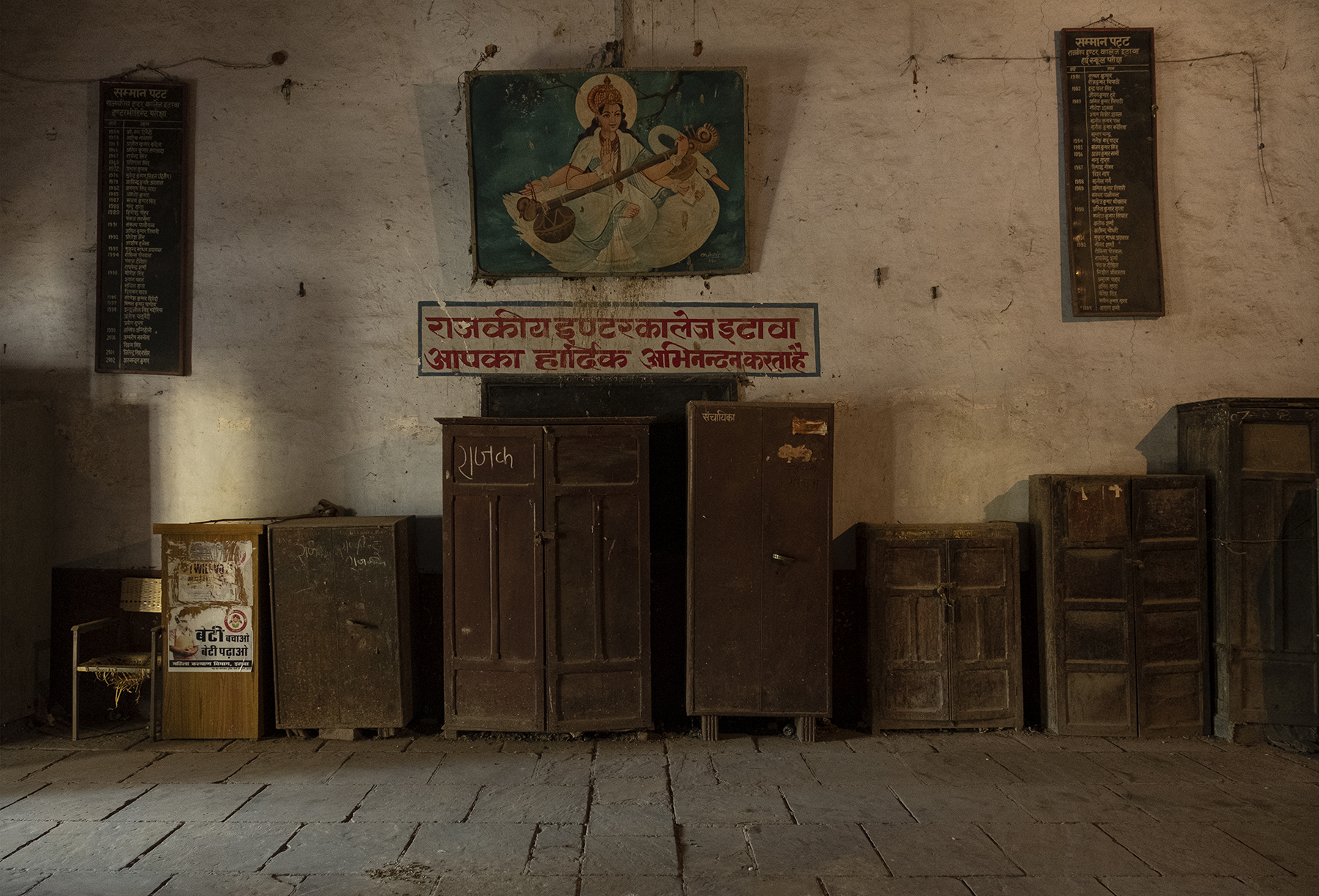



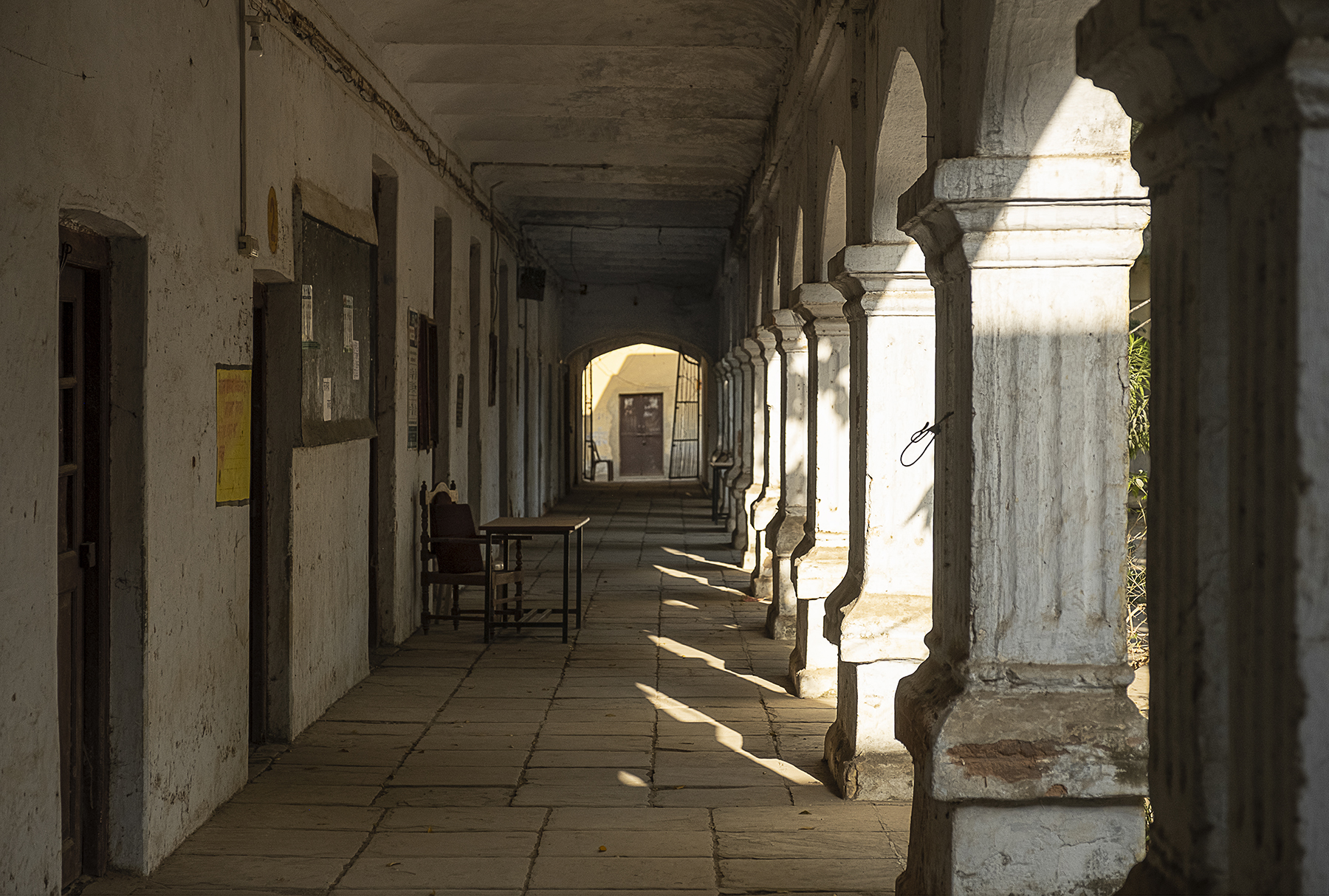




I can’t decide whether my father’s college elated or depressed me. By the looks of it, the administration has a small budget that allows maintenance only on the outside. According to the boys, the college is functioning. Then why posters of local shops adorn the inside walls? Well, this is UP, where everything goes.







My uncle was very excited to acquaint me with Etawah’s famous ‘Ghoda Chai’ – literally translating to ‘Horse tea’. Horse has no connection to its name. Just like the Led Zeppelin song Black Dog, it is elegant in a disconnected title. The tea is cooked in a mix of cow, buffalo, goat milk and cream. Cream is called sapreta here.



The Ghoda Chai shop is one of the few places Etawah thumps its chest abouti. Only two varieties of tea are served here–sweetened, unsweetened. How does it taste? It is a full bodied, mild leaf, lactose doused soft pelt. It’s good, but not crazy. People claim to visit Etawah just for the tea. I tried their bun omelette. Again, good but not exceptional. I guess it’s the price and atmosphere that sets it apart. We got a place to sit courtesy covid. In times of health one has to scratch inside a queue for a while to stick one’s lips with it.

Another experience, unknown to me before. It is Khajla–a large fried bread of sweet maida (refined flour), topped with Khoya. Everything about it says Dangerous. It guarantees blood to a sugary sludge should you venture to ingest it.

I wanted to meet a humourless stuffed cock with no biceps like this one in Etawah. This is the image of a typical UP man embedded in my mind. However, he was the only specimen. Most were friendly and eager to smile.




This fellow looks grumpy, but he’s not. A shop like this in Delhi would have ten times the fly population visiting it for free lunch. This is next to the railway station, which to my surprise, was exceptional in cleanliness.

I visited the famous Tixi and Kali temple. They weren’t lost trips, but the experience wasn’t the kind to qualify for this travelogue. Religious places aren’t my thing, anyway. The evening strolls were littered with gems, however.

This is another ‘Victoria Memorial’. Now it is an indoor badminton court.


I’m sure spiders and their real estate have a special place in Etawah’s heart. GIC had plentiful, and now this. Etawah prefers a natural way to control flies and mosquitoes over using poisons.




We parked our car next to a State Bank Of India branch and ATM in our ancestral village Baralokpur. Though the village is not cocooned by isolation, I did not expect to see such conveniences of modern life. I hoped it had the charm of a village. To my delight, it had.


A village is never in a hurry. The nature of its society resists pressures from electricity, cell phones and televisions.
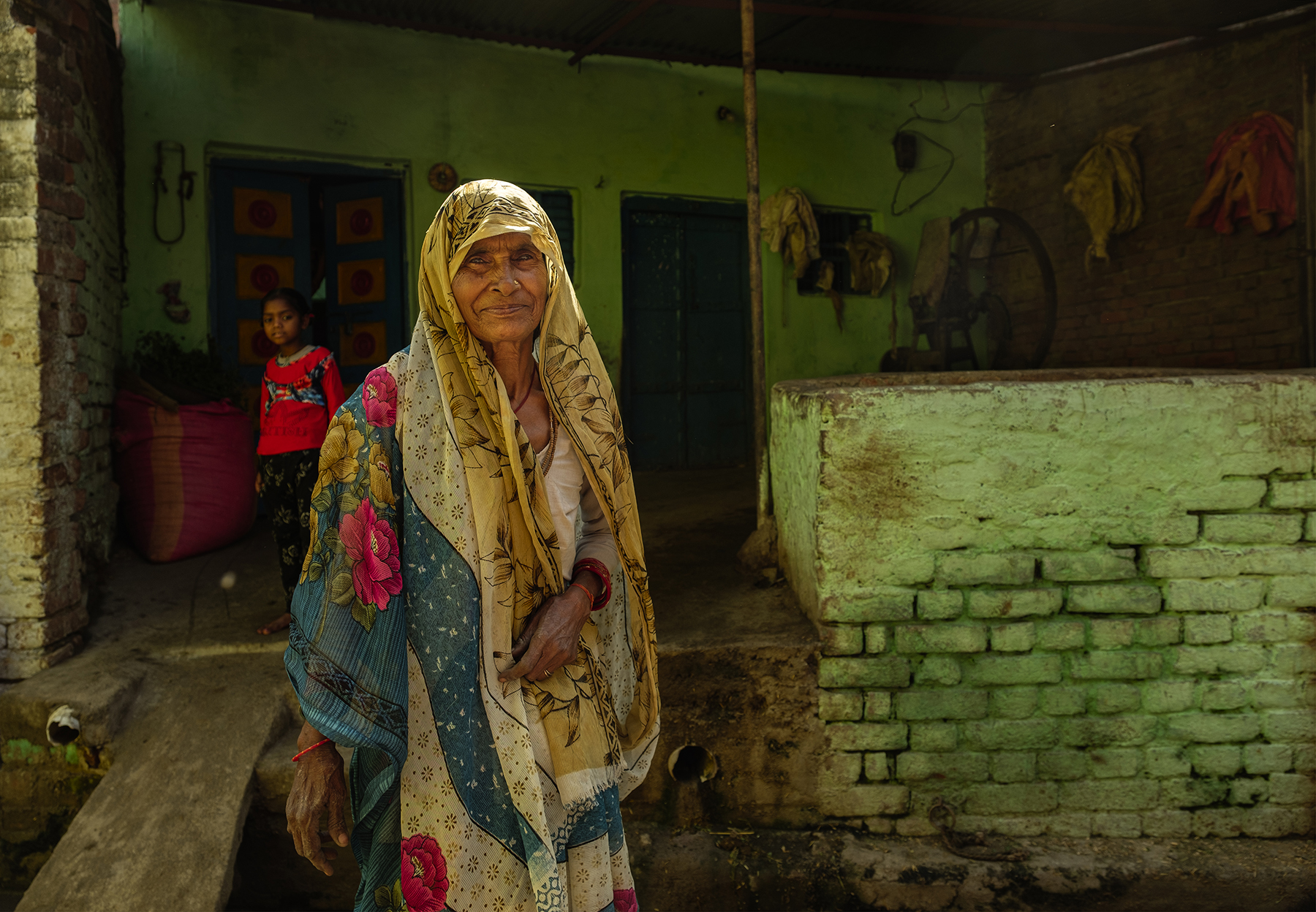

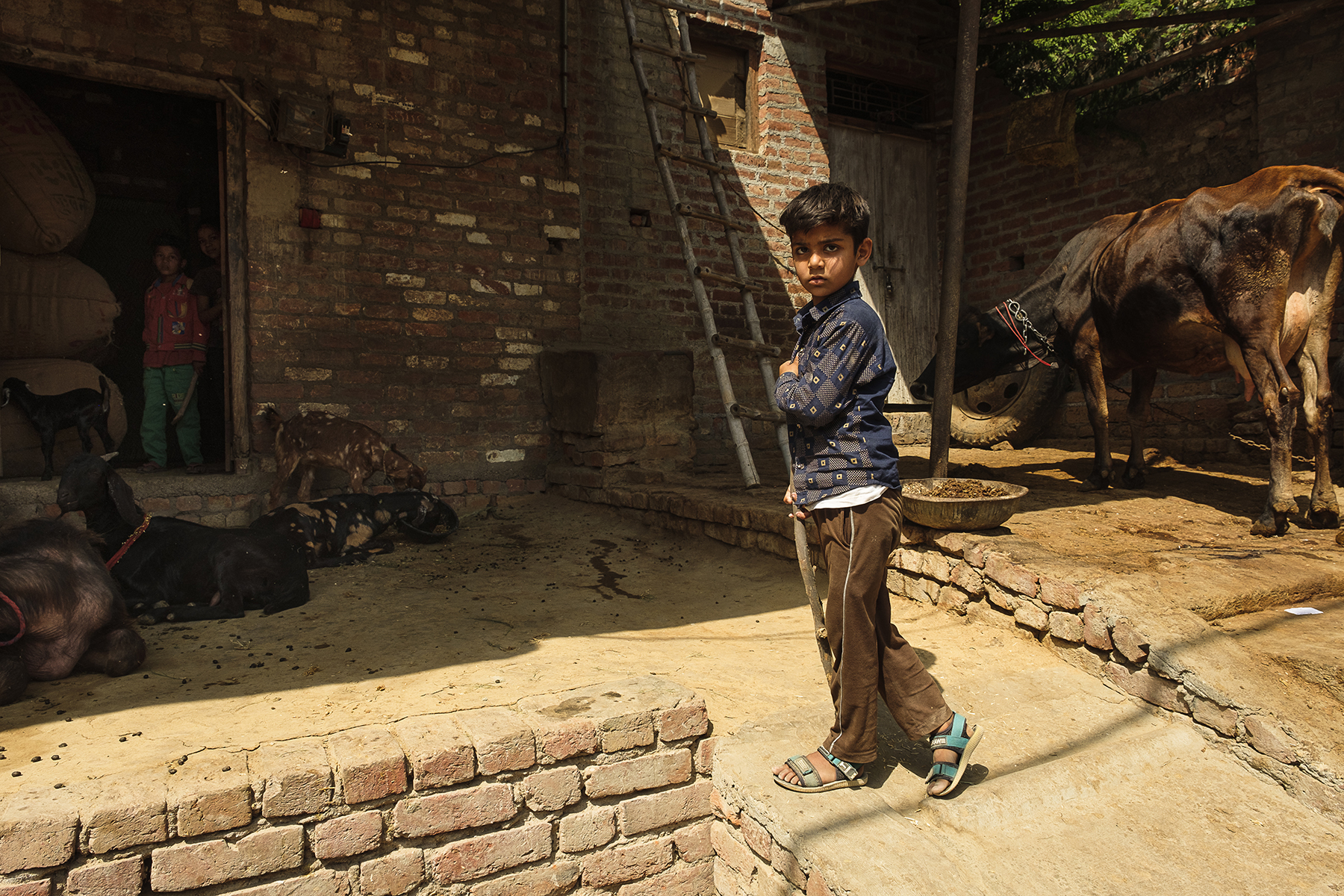
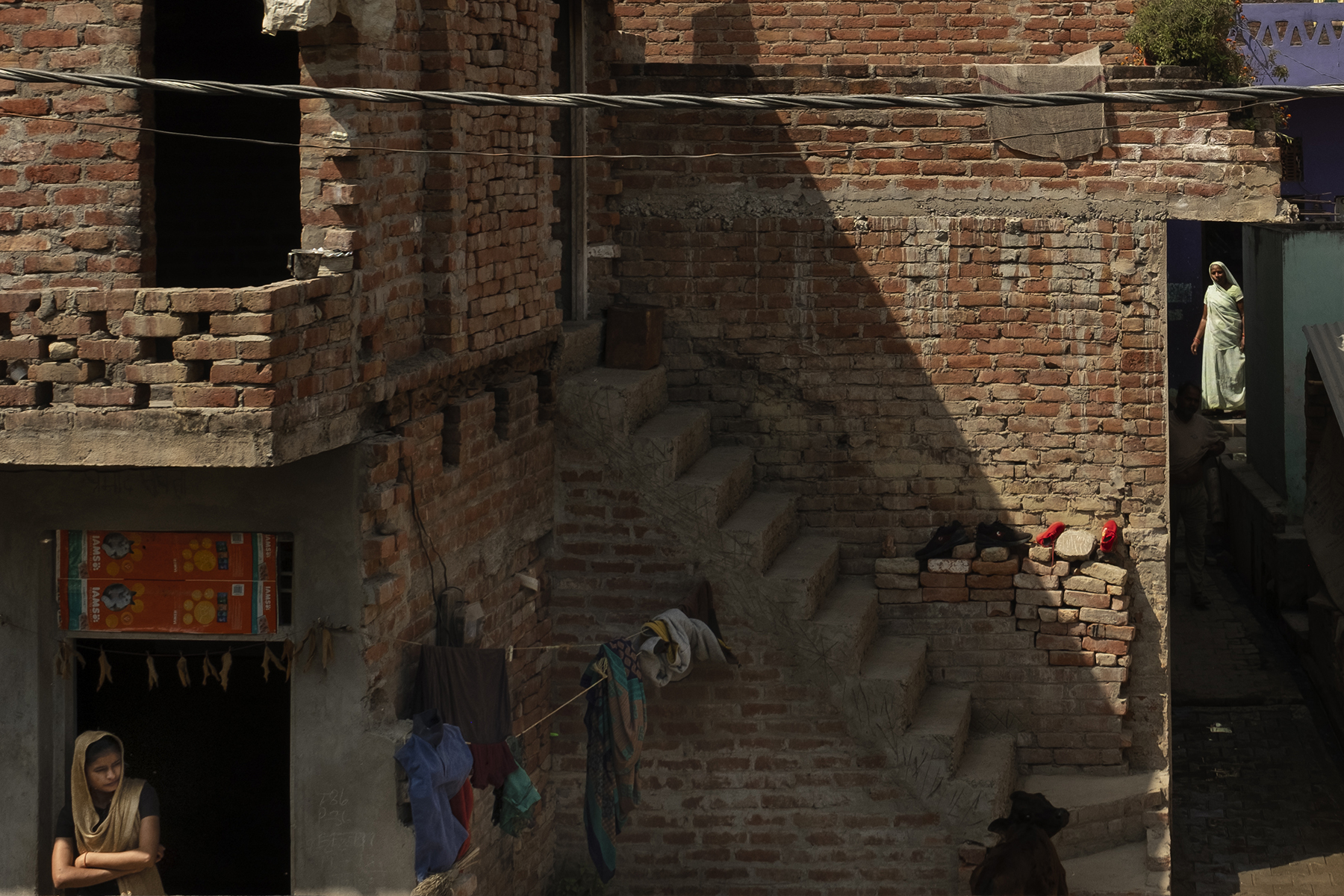


Houses huddle just the way they do in a city, which means land prices are appreciating. Most new construction leave the bricks un-plastered on the outside. The picture above is the only oddity I saw–new construction plastered, old left as it was.

Our host, Mr Atul Dubey. No one calls him by that name. He is the only ‘Bade Lalla’ (Elder son) of the villager. I am a Dubey too, but we are not related. His mother was my grandmother’s best friend and that was reason enough for him to spend the whole day with us. The village honours past relationships to this day. Notice the poster of Hunamanji. It intrigued me.

I’ve forgotten his name. Here he’s telling me a story. The little thread and snip I understood was about his fourteen day illness. He spoke of my father too.

The wives. I love their saris–a chaotic exposition of crazy. The woman on the left keeps her mobile tucked in the blouse. When she gets a call, it buzzes her bosom.

We had a typical UP village fare for lunch–’Matha ke Aloo’ (potatoes cooked in buttermilk), cabbage, pea-potato and Rabri with rice and chapati. Cooking gas is available in the village and most use it instead of dung cakes or twigs. Though giving infinite respite to the ladies, biofuels add unique texture and aroma to food, something I longed for and did not get.


This picture tells a lot. I’ve lived in Indirapuram (a place in UP, just on the rim of Delhi) for three years. And those three years never saw electric supply for more than fourteen hours a day. That was 2003 to 2006. I dread UP for that reason. However hope filled my heart seeing an electric iron in Baralokpur. It had enough power available to heat iron and burn switches. Notice the Bharat petroleum ‘Pure for Sure’ sticker on the switchboard.

This is the third house I have visited in UP where women didn’t feature in photographs of ancestors. My family is different. My grandmother is in every family picture.

Sights like this send me into eddies of sadness. How providence sends a creature to endure its days. The baby calf should be prancing around, exploring the world. Instead, it stands tied in a corner and in time, will grow udders, her eager owners are waiting for.

Most old houses in the village are recipients of similar fate. This is a part of our host’s ancestral home, which is too large for him to maintain.

My grandfather’s uncle had this gate erected to welcome a singer he had fallen in love. The lady lived in a different village and refused to leave it to settle with him in Baralokpur. So, pandit Raj Kumar Dube, himself an accomplished tabla player took a small army on horses and threatened the lady’s village with dire consequences if they didn’t relocate to Baralokpur. He was a powerful landlord, a Rais, whose edict was honoured. The village shifted in a few weeks, leaving the lady all by herself. She heeded, but not before he had the foundation stone of this gate laid by the magistrate and collector of Etawah, W. D. Macleod and the gate erected in time to welcome her. She lived as his mistress thereafter.

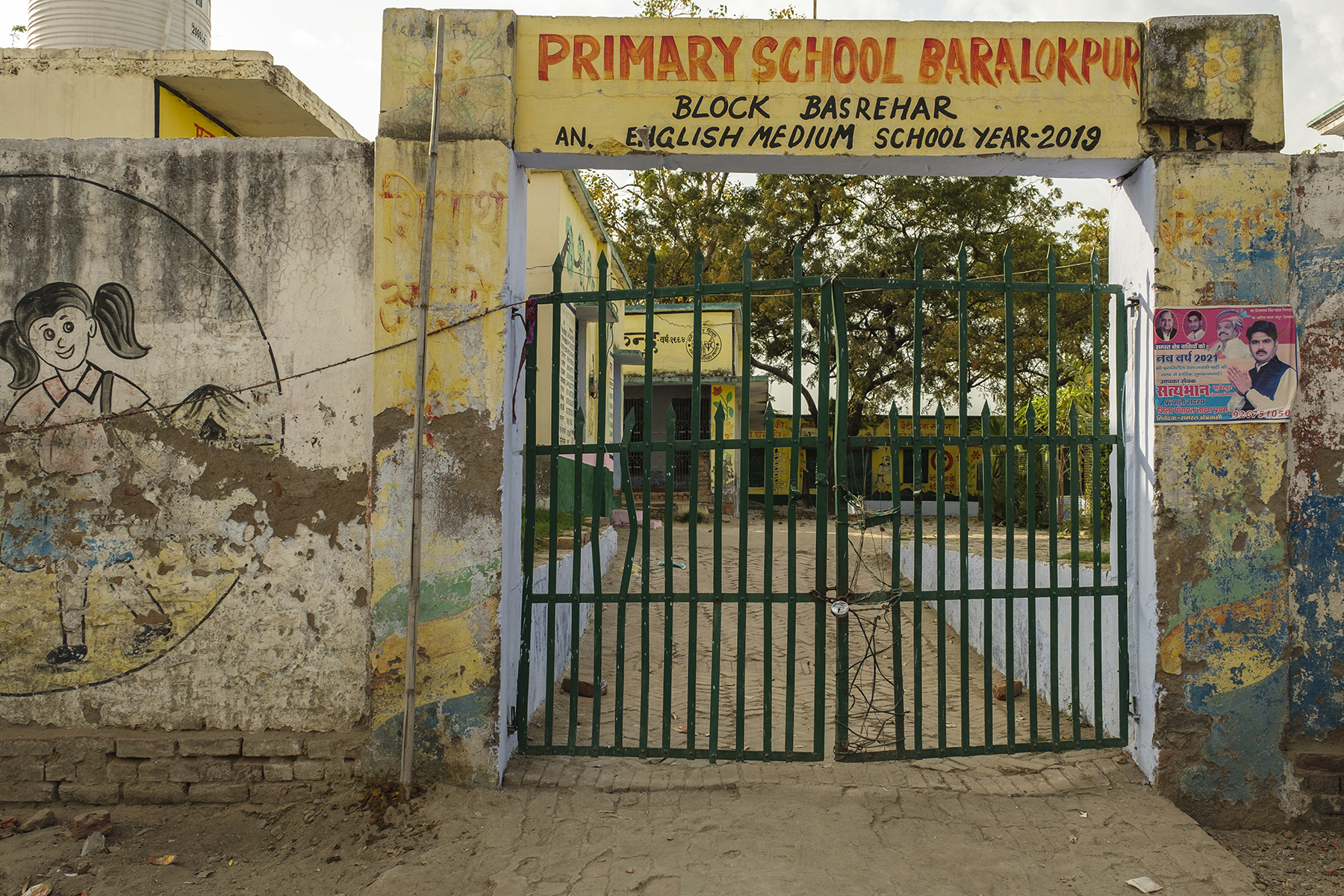
The primary school in Baralokpur is an English medium school where children can discover the importance of an octopus in their lives.

I believe the government is doing all it can with whatever resources at its disposal to inculcate the importance of education in villages like these. Yes, we know corruption happens, but even if half gets past, it’s worth the effort.

A strange pervasive idleness struck me in the streets of Baralokpur. It scared me for a moment. However, seeing busy children allayed my fear.
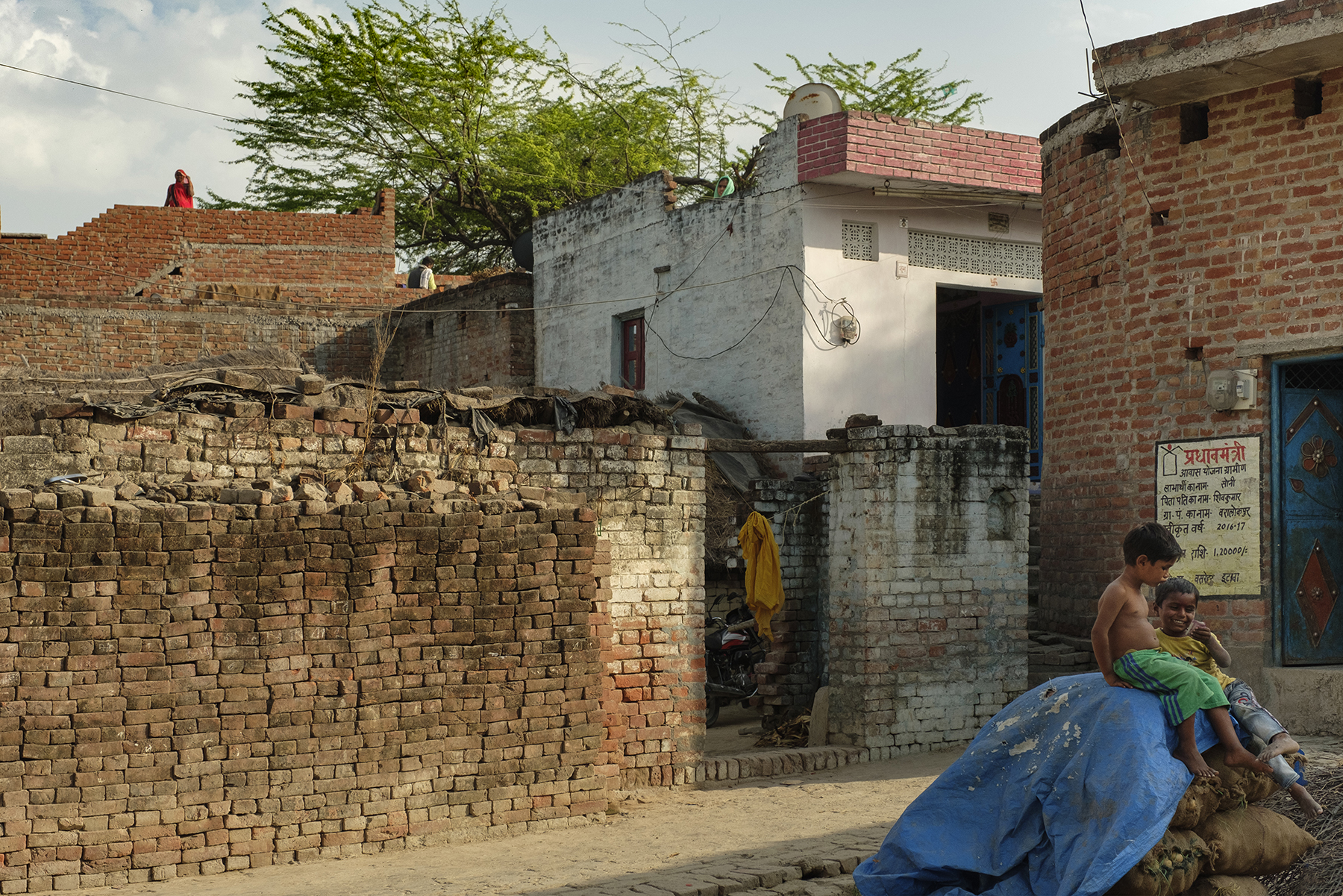




Our village has exceptional number of banyan trees. An eighty year old graces our home as well.

A large ‘mansion’ like this is difficult to maintain. So parts of it are let out and parts used to keep hay.

Hibiscus grows in the inner courtyard.

The current tenants.


Toilets have arrived. They’re smaller than conference rooms and have no ventilation.

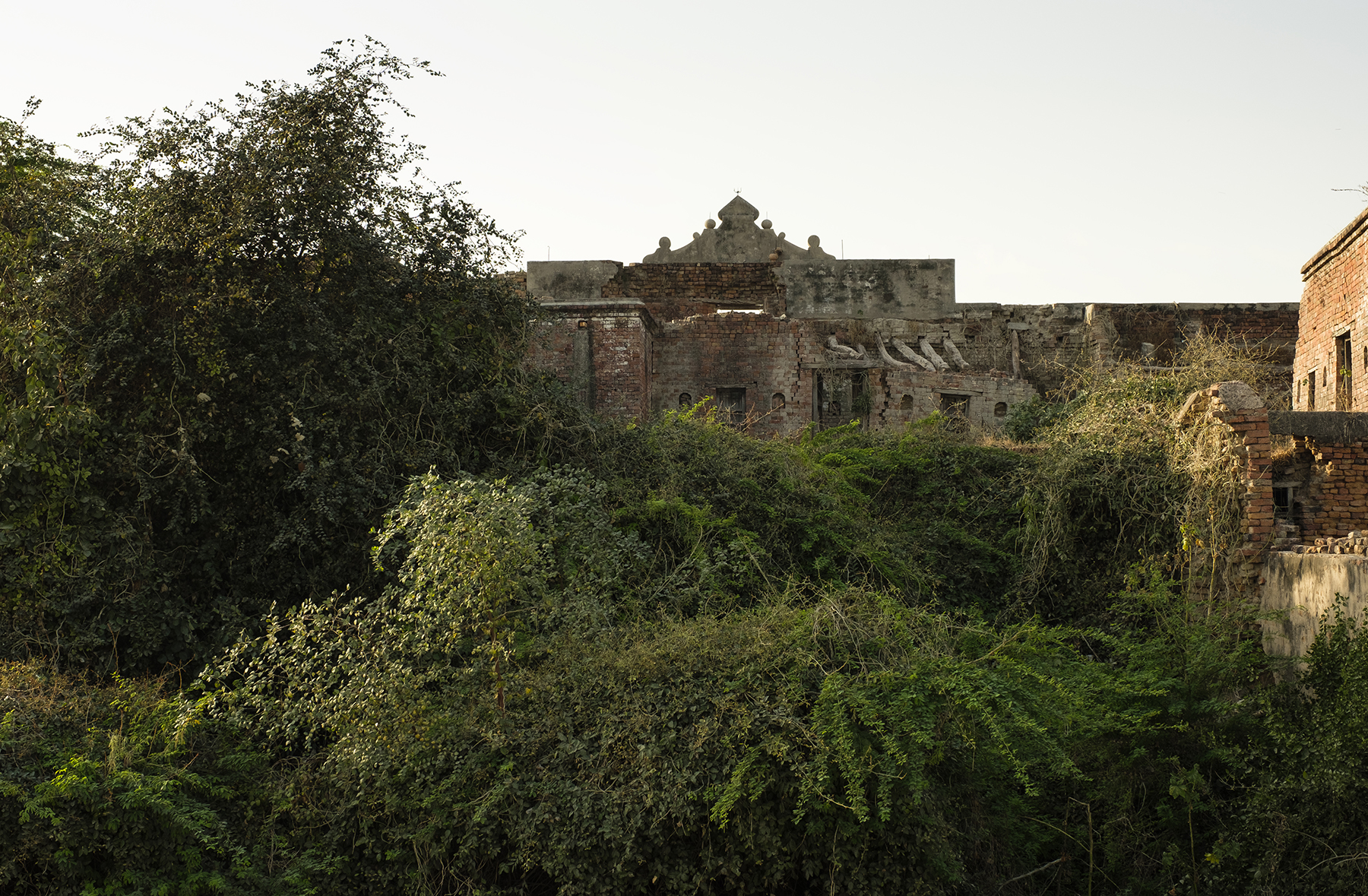
I learnt an interesting thing about our house. No one living here, ever had any paper or document to proclaim it as its owner. As I said before, six families lived there at a time, all in an unwritten understanding of which part belonged to whom. Rest of the village follows that ethic to this day. Any disputes are handled by the village panchayat.

Strolling in the village later, I came across these two boys. It was refreshing to see young men in the shape they should be, not resembling pouches of Maggie and biscuits. I gloated when they asked me if I go to the gym.

Like most villages, ours have sprawling fields, too. This is a non functional well.

The village has two Airtel towers and one of Vodaphone. Soon tracks for the bullet train would be laid in its vicinity.

Will I ever visit Baralokpur or Etawah again. Do I have any sense of attachment to them. I can’t say, I do, even if they are a part of my family’s history. However, I enjoyed the trip and will remember it for the time I had with my uncle and hearing his stories.

Countless travellers have made it to the horizon with their stories. And when I stand at its brim, I want to leave a few memorable ones too. Cheers!
Thanks for sharing these insights.
Thank you so much for sharing Prateek, a wonderful and touching view through your eyes! So many beautiful and sincere photographs!
Take care dear friend!